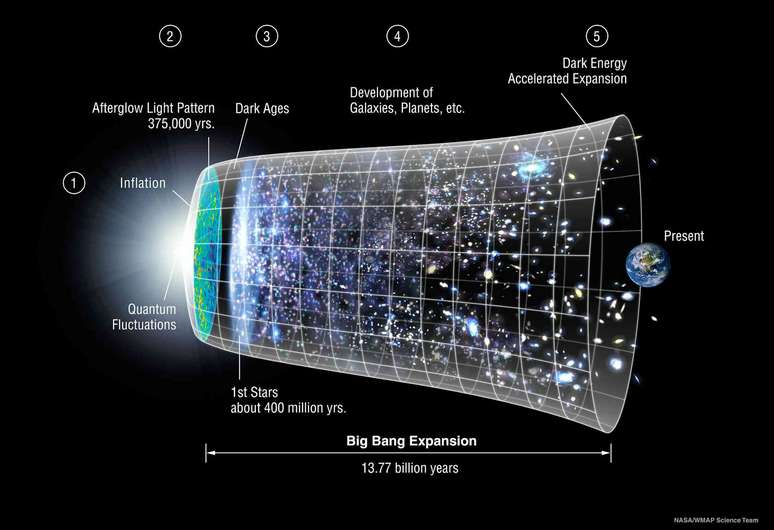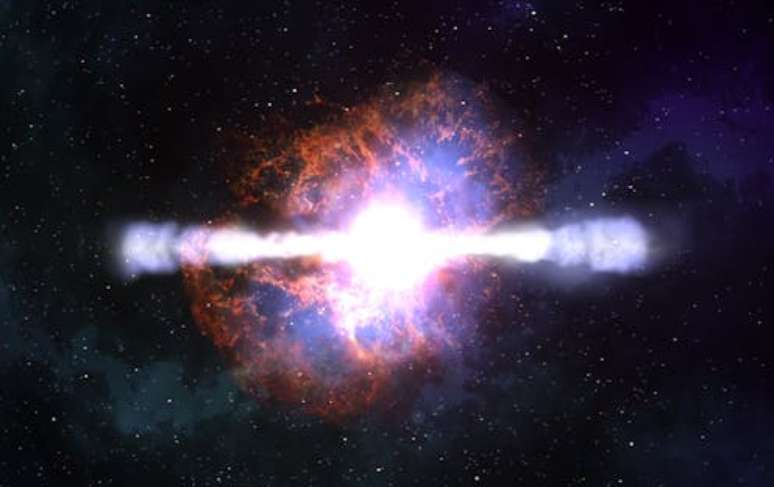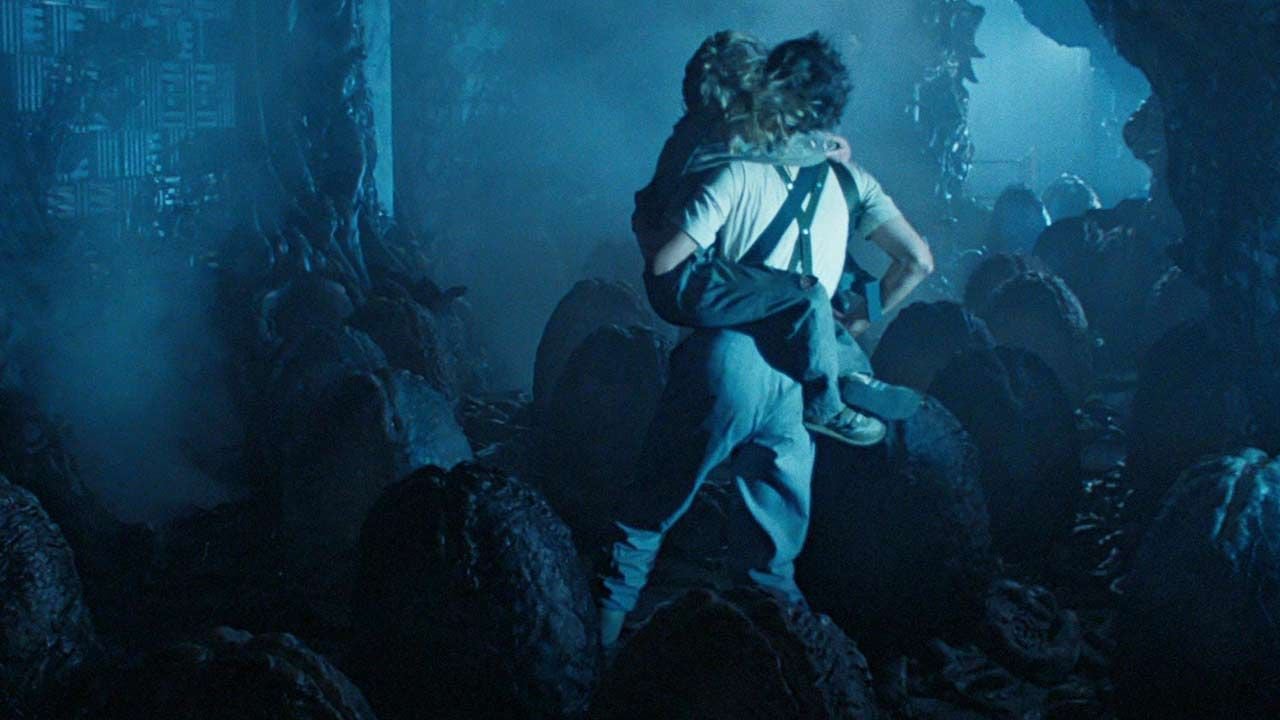A new study of exploding stars provides the first evidence for an alternative model to explain the observed accelerated expansion of the Universe, called the “Timescape”
By observing the light coming from the explosion of distant stars, called supernovae, astronomers discovered in 1998 that the Universe is not simply expanding, but its expansion is accelerating. But what was behind this acceleration?
Dark energy. It’s one of the most debated and intriguing puzzle pieces in modern physics: a mysterious form of energy believed to uniformly permeate all of space. In the current most accepted model of modern cosmology, dark energy is what drives the accelerated expansion of the Universe.
What if there was another explanation that doesn’t involve dark energy? A recent study using supernova data suggests that there may actually be an alternative explanation, called the “Timescape model.”
This discovery could profoundly challenge our understanding of the Cosmos. So let’s delve deeper into the topic.
What is dark energy?
The backbone of modern cosmology is the model Lambda-cold dark matter (Cold Dark Matter-Lambda, or Lambda-CDM, for its acronym in English). It describes a Universe in which dark energy – denoted Λ, the Greek letter Lambda – is the mechanism driving the accelerated expansion of the universe.
According to this model, galaxies dance together under the effect of an invisible network of dark matter composed of heavy particles that do not interact with anything. The effects of this cold dark matter can only be observed through gravity.

A timeline of the Universe, according to the Lambda-CDM model.
NASA/LAMBDA Archive/WMAP Science Team
Dark energy accounts for nearly 70% of the total energy in the Universe, but its exact nature remains one of the greatest mysteries in physics.
Some interpretations suggest that dark energy may be linked to vacuum energy, while other studies have attempted to describe it as a new, evolving energy field spread throughout space.
And a recent study by the international DESI collaboration tracking the expansion of the Universe suggested that dark energy may be weakening over time.
It is also possible that our current theory of gravity (Einstein’s theory of general relativity) is incomplete. Perhaps an extension is needed to describe gravitational interaction on a cosmological scale: distances on the order of millions to billions of light years.
What is the Timescape Pattern?
Matter – dark matter, gas, galaxies, star clusters and superclusters – is not uniformly distributed in the Cosmos.
But for the Lambda-CDM model, we assume that the Universe is homogeneous and isotropic. This means that on a cosmic scale the distribution of matter appears regular and uniform. Any lumps and gaps we might find can be considered insignificant due to the large scale of the whole.
On the other hand, the Timescape model takes into account the non-uniform distribution of matter. It suggests that our intricate cosmic web – made up of galaxies, clusters, filaments and vast cosmic voids – directly influences how we interpret the expansion of the Universe.
This would mean that the Universe is not expanding uniformly.
According to the Timescape model, the expansion rate of the Universe varies between different regions depending on their density.
The main parameter of the Timescape model is the “void fraction”: it quantifies the proportion of space occupied by expanding voids.
Gravity dictates that voids expand more quickly than denser regions: they have less matter to hold them, allowing space to extend more freely. This creates a medium effect that can mimic the accelerated expansion attributed to dark energy in Lambda-CDM.
In short, the Timescape model suggests that, to us, it may appear that the expansion of the Universe is accelerating. The rate of expansion depends on where you are in the Universe.
What did the study find?
The authors of the new study analyzed one of the largest collections of Type Ia supernovae, called the “Pantheon+ dataset.” These supernovae are a reliable standard used to test cosmological models.
The team compared two main models: the standard Lambda-CDM (our “base” recipe for the Universe) and the Timescape model.
When observing nearby bright supernovae, the Timescape model explained things better than our standard model. However, this was only statistical data, with the statistical analysis showing a “very strong” preference.
Even when they looked at more distant supernovae, where things should be more evenly distributed, Timescape still held up slightly better than the usual model.
The conclusion? The Timescape model, which focuses on how cosmic “lumps and voids” change how we see the Universe grow, may be better at capturing the true nature of our Universe’s expansion. This would be especially true for the nearby Universe: we have many voids and filaments near us, which would affect how we see the expansion.
How strong is the evidence, then?
There are important caveats. The analysis does not take into account peculiar velocities, or small random motions of galaxies that can influence supernova measurements. They also don’t take into account Malmquist bias, which states that brighter supernovae are more likely to be included in the data simply because they are easier to detect.
These possible sources of error could seriously compromise the results. Furthermore, the study did not use the most recent dataset of the DES5yr supernova. It is more consistent and uniform in its data collection than Pantheon+, which can make it more reliable for comparison.
There are other aspects besides supernovae that currently support the Lambda-CDM model, mainly baryon acoustic oscillations and gravitational lensing. Future work should integrate them into the Timescape model.
But with this new study, the Timescape model offers an interesting alternative to Lambda-CDM. The conclusion is that the acceleration of our Universe is an illusion due to the non-uniform distribution of matter, with large cosmic voids expanding faster than denser regions.
If confirmed, this would represent a revolutionary paradigm shift in Cosmology.

Rossana Ruggeri has received the Discovery Early Career Researcher Award (DECRA) from the Australian Research Council (ARC), which supports her independent research project entitled “Probing Dark Energy with the Largest 3D Map of the Universe”.
Source: Terra
Rose James is a Gossipify movie and series reviewer known for her in-depth analysis and unique perspective on the latest releases. With a background in film studies, she provides engaging and informative reviews, and keeps readers up to date with industry trends and emerging talents.







